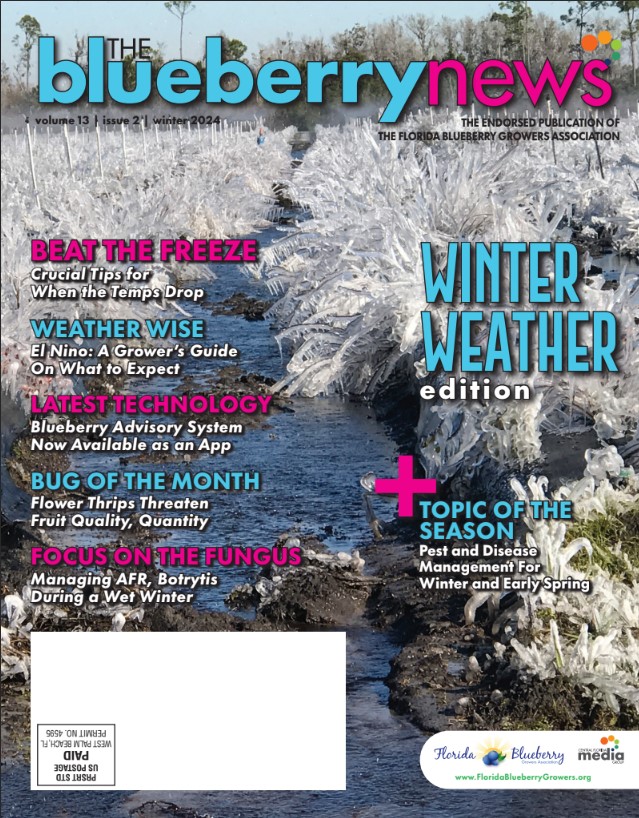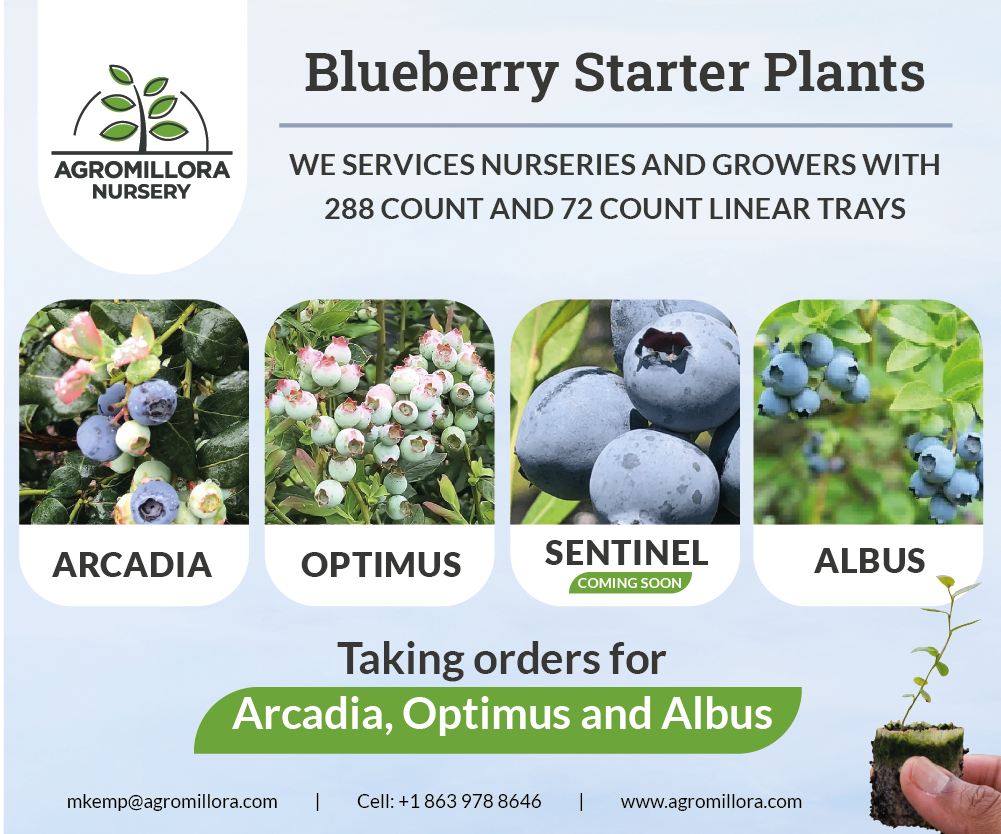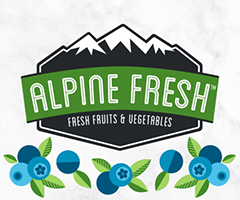Getting Ahead with these Spring Weed Management Reminders
Weeds compete with blueberry for water and nutrients, which inhibits bush growth and yield. Weed control options include preventative, mechanical, and chemical weed control options. A proper ID of weeds is important for selecting the correct method of control.
Selecting the correct method of weed control starts with proper identification. For example, if the weed in the blueberry field is nutsedge, but is incorrectly identified as crabgrass, you have a problem. Mowing or applying a grass herbicide (i.e., Select Max, Poast) would control crabgrass, however, nutsedge would not be controlled with such methods.
Preventative weed control is often overlooked because the practices seem simplistic, but they have an important role in weed control. Employ weed control before the weeds set seed; many weeds produce hundreds or thousands of seeds and will contribute to the seed bank in the soil surface. If weeds have produced seeds, then use hand weeding to remove them from the field or mowing with a bag. Keep weeds from growing on pine bark mulch piles before spreading mulch in the crop row. In the grass strips between crop rows, mowing can reduce the population of broadleaf weeds because the growing points are removed.
The most popular method of weed control is chemical control. Herbicides can be separated into preemergence and postemergence herbicides. Preemergence herbicides control the weeds before the weed emerges from the seed. Postemergence herbicides control weeds that are actively growing. Most herbicides are sprayed under the bushes to maintain a weed-free strip and grass is grown in between the weed-free strips. Herbicides are registered in nonbearing bushes, which will not be harvested for one year after application. Bearing bushes will be harvested in one year after application.
PREEMERGENCE HERBICIDES
Preemergence selectivity is based on seed size, seed coat, seed structure, etc. For specific weeds controlled, consult individual herbicide labels or the EDIS entitled “Estimated Effectiveness of Recommended Herbicides on Selected Common Weeds in Florida Vegetables.”
Preemergence herbicide effectiveness can be improved by many factors. FIRST, select a preemergence herbicide that will control weeds that are historically problematic in the field. SECOND, incorporate the preemergence herbicide into the top three to four inches of the soil profile with irrigation, rainfall, or cultivation. THIRD, apply to a clean soil surface to increase the amount of herbicide reaching the soil where the weed seed is present.
For late winter or early spring, one limitation for chemical weed control is preharvest intervals. Before bloom, select a preemergence that has a long period of weed control, such as Chateau or Alion. Chateau has been used extensively by Florida blueberry growers and some fields have seen a shift in weed species that are less susceptible to Chateau so herbicide rotation is important. Alion is a new preemergence herbicide for Florida blueberry growers; the University of Florida is currently conducting trials on this herbicide. If you choose to use this herbicide, start with a small area.
Other preemergence active ingredients such as simazine and oryzalin still control important weed species and have many generic products that are cheaper alternatives but are important to include in the rotation with other herbicides.
POSTEMERGENCE HERBICIDES
Postemergence herbicides are nonselective or selective based on the spectrum of weed control. Nonselective postemergence herbicides control broadleaf and grass weeds. Nonselective postemergence herbicides include glyphosate (Roundup/others), glufosinate (Rely 280), paraquat (Gramoxone/ Firestorm), and pelargonic acid (Scythe). Selective postemergence herbicides are limited to the spectrum of weeds that are controlled by the active ingredient in the herbicide. Clethodim (Select Max/Arrow/Tapout/ others), Sethoxydim (Poast), and fluazifop (Fusilade DX) provide control of grass weeds only. For perennial grass control, use a higher rate of the herbicide. When considering a grass herbicide, take into account the bearing status and preharvest interval. All three active ingredients can be applied in nonbearing blueberry, however, fluazifop is not registered for application in bearing blueberry. The preharvest interval for clethodim is 14 days and the preharvest interval for sethoxydim is 30 days.
Several factors can improve weed control by postemergence herbicides. FIRST, consult the label of a surfactant, which is required in the spray tank at the time of application. A surfactant reduces the surface tension of the drop or breaks down the cuticle of the leaf to increase absorption into the weed. SECOND, spray when weeds are actively growing and not under stress. Weeds that are experiencing drought may have a thicker cuticle or cold temperatures may reduce absorption by the weed. THIRD, complete coverage of the weed foliage when increasing control. To limit the contact with the blueberry bushes, direct the spray solution to the base of the bush while providing adequate coverage of the weed. Finally, plan an application well before a rain or irrigation event. Labels include a rainfastness time, this amount of time allows for adequate absorption of the herbicide and limits the amount of herbicide washing off the leaf.
TANK MIXING
Most of the preemergence herbicides do not control the weeds after emergence and it is important to include a postemergence herbicide. If the weeds are greater than eight to 10 inches tall, then spray a postemergence, allow the weeds to die, and then apply a preemergence herbicide so that the herbicide can reach the soil surface where the weed seeds are in the soil.
As the bushes begin to flower and fruit, we are limited in the number of herbicides that are available for application because of preharvest intervals. Always remember, for each weed you see above ground there are hundreds of seeds in the soil that need to be controlled. So start the weed control early before seed set, remove the seed from the field, and make proper herbicide selection for the weeds in the field.





